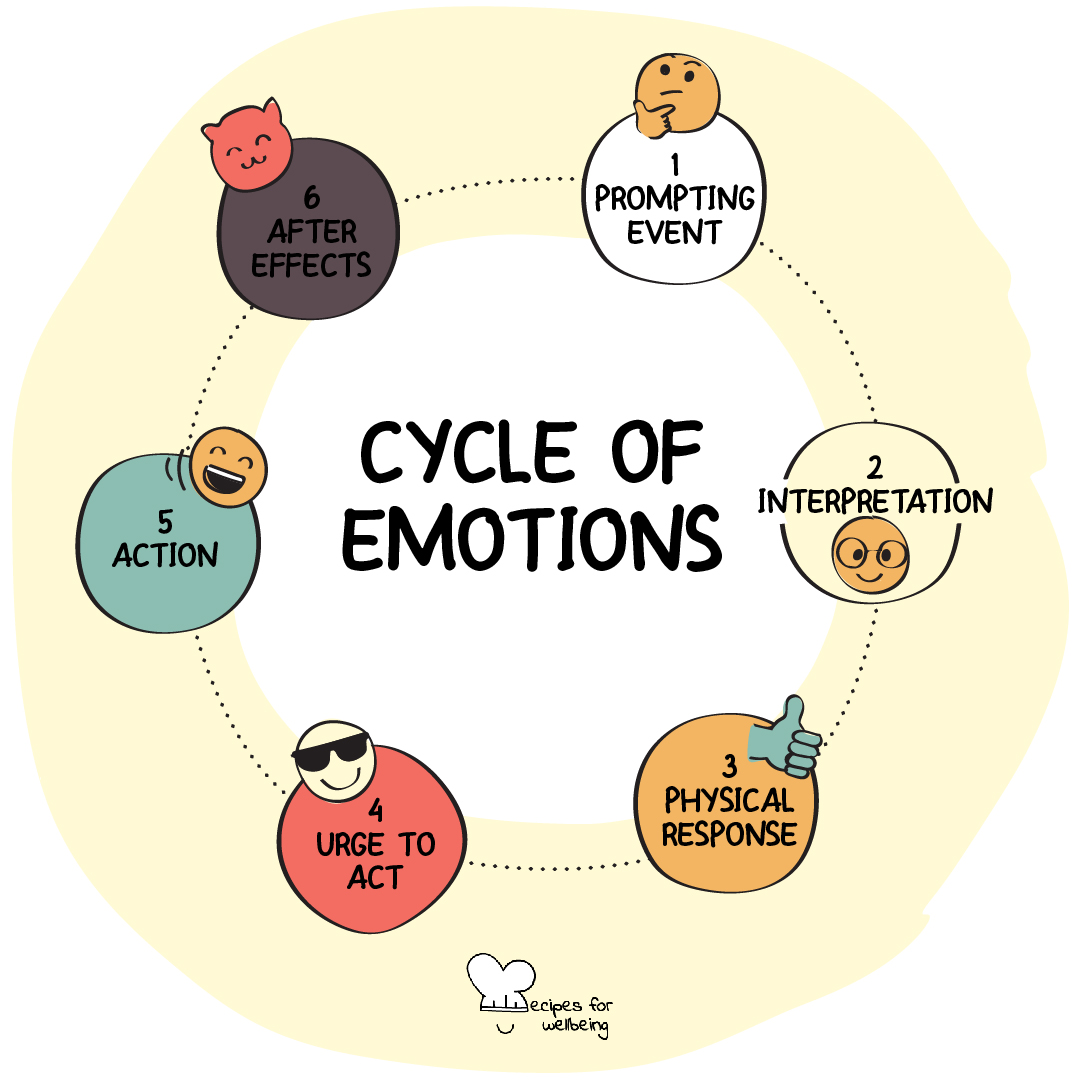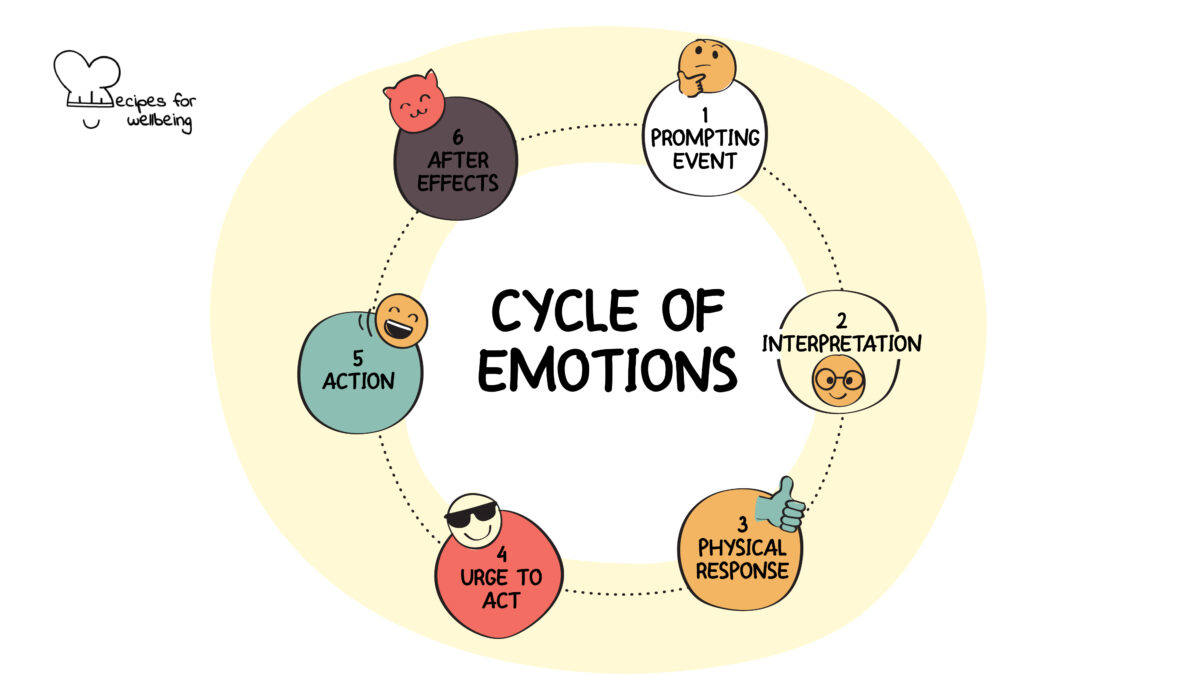
Cycle of emotions
All emotions are neutral. They have no meaning other than the meanings we assign to them. An emotion is like a burst of energy that quickly circulates around the mind and body, indicating that there is an imbalance that needs to be brought into balance. The moment you experience a burst of emotionally charged energy, suspend all judgement of yourself for feeling whatever it is and ride it out. ―Iyanla Vanzant
👥 Serves: 1 person
🎚 Difficulty: Medium
⏳ Total time: 11-30 minutes
🥣 Ingredients: A sheet of paper and a pen, book “The Onward Workbook: Daily Activities to Cultivate Your Emotional Resilience and Thrive” by Elena Aguilar (if you’re curious to find out more about it!)
🤓 Wholebeing Domains: Awareness, Discomfortability, Positive Emotion
💪 Wholebeing Skills: Acceptance, Agency, Calm, Perspective, Resilience, Self-awareness, Self-regulation, Serenity

Cycle of emotions
📝 Description
Understand your emotions to choose how to respond.
Every event is neutral. You gave it meaning through your beliefs which resulted in specific behaviours. Do you have your emotions or do your emotions have you? By seeing the connection between your emotions, beliefs, and behaviours, you can deepen your awareness and reach emotional self-mastery which will help you be more intentional in your response to emotional upsets. Moreover, being aware of your emotions increases your capacity to be aware of other people’s emotions (and the impact of these) and both are the essence of emotional intelligence.
This recipe guides you through a simple process to reprogramme your mind so you can manage your emotions. It has been adapted from “The Onward Workbook: Daily Activities to Cultivate Your Emotional Resilience and Thrive” by Elena Aguilar, 2018. You can also check out our recipe “Stress diary” to log in your episodes of stress and “STOPP framework” to work with difficult emotions.
👣 Steps
Step 1 – Preparation (5’)
Take pen and paper and draw a circle with 6 sections: 1. Prompting event, 2. Interpretation, 3. Physical response, 4. Urge to act, 5. Action, and 6. After effect (you can refer to our illustration for inspiration).
Identify a recent emotional experience that you wish to reflect on. Write it down in a couple of sentences at the centre of the circle, describing what happened. Name the emotion and its intensity from 1 (low intensity) to 10 (high intensity).
Step 2 – Prompting event (5’)
Move to the first section: Prompting event. What happened that triggered the cycle? This is the who, what, when, and where.
Step 3 – Interpretation (2’)
Move to the second section: Interpretation. How did you interpret the event? This is the why.
Step 4 – Physical response (2’)
Move to the third section: Physical response. What happened in your body? Be curious about the physical sensations you experienced. Were your hands sweaty? Was your heartbeat racing? Did your knees feel like jell-O?
Step 5 – Urge to act (2’)
Move to the fourth section: Urge to act. What did you plan to do? Think about your immediate reactions (thoughts popping up in your head, actions you wanted to take…).
Step 6 – Action (2’)
Move to the fifth section: Action. What did you ACTUALLY do? Write down what you said or did, trying to be as specific as possible.
Step 7 – After effect (2’)
Move to the sixth section: After effect. What was the consequence of what happened and how you responded?
Step 8 – Reflection (10’)
Take a few minutes to deepen your reflection by observing how your interpretation of the event might have triggered a certain emotional response. What could you do differently next time around? Repeat this process as many times as useful until it becomes automatic and you can do it in-the-moment, rather than after you have been upset and responded reactively.

